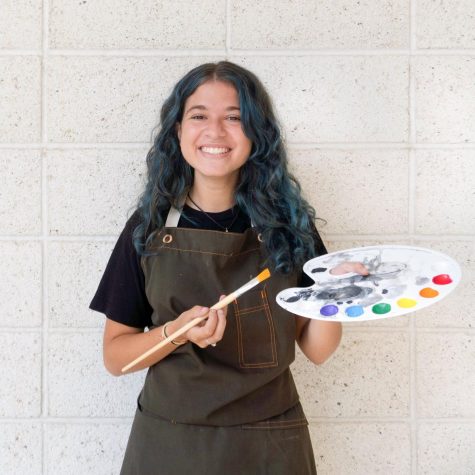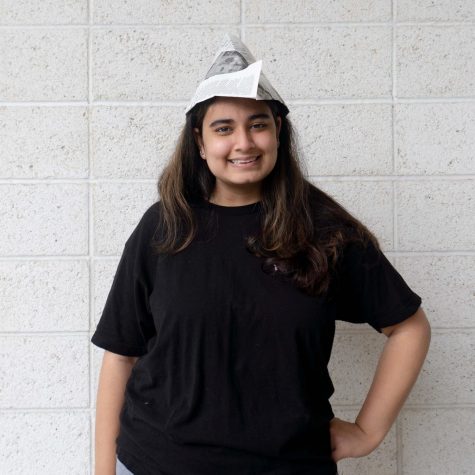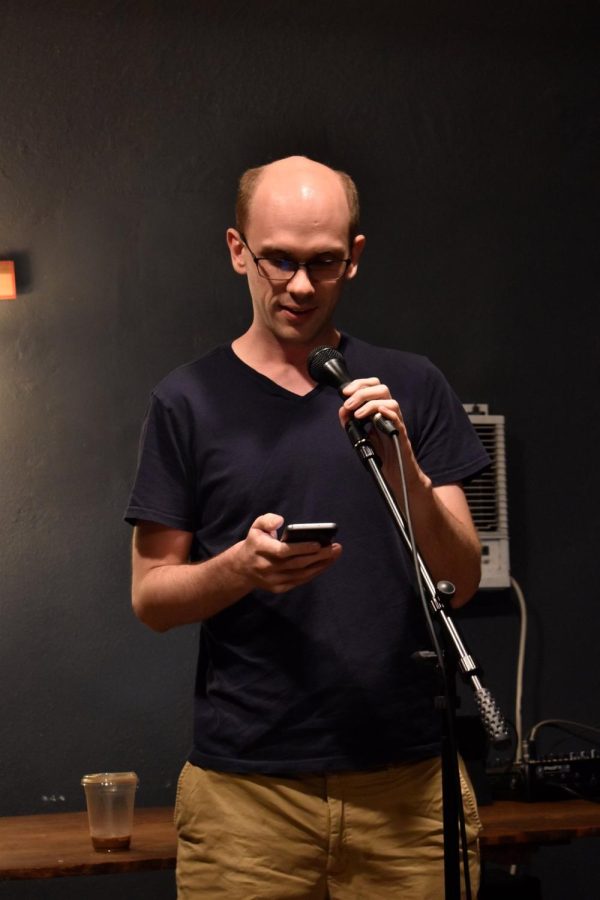Creativity in STEM: Ryan Johnson’s Journey with Poetry
Physics teacher Ryan Johnson reads a poem from his phone at an open mic in Long Beach. “For me, it’s a way of noticing the beauty in everyday life that I, for whatever reason, think that people aren’t already describing as beautiful,” Johnson said.
At first glance, physics may seem purely fact- and data-based, but physics teacher Ryan Johnson’s poetry proves otherwise. You may walk into his classroom to find him demonstrating the laws of force and inertia to his class during the school day, but later in the evening, he might be at the hot new coffee shop for an open mic.
According to Johnson, who first started creative writing as a hobby in high school, he found the confidence to open up and share his poems after graduating, when he began attending open mic nights around Orange and Los Angeles counties. Open mics allowed him to hear a wide variety of poets from all across the county as well as share his own pieces.
“It becomes more apparent how important it is to tell your own story when you hear the stories of people who are different from you,” Johnson said. “The main thing that has kept me coming back to those communities is getting to hear about the lived experiences of a wide variety of people who are using this as a creative outlet.”
Johnson uses his poetry experience to help his classes better understand why communication and creativity are important aspects of physics. Every year, physics students are tasked with completing unit projects that require them to use their creative thinking skills to solve problems around them while demonstrating their knowledge of physics concepts.
“The goal of [these projects] is to make sure that people are recognizing that they have this vast creative power,” Johnson said. “And everyone has some of that that they can build from. And if they felt excluded from science in the past because of its non-creative incarnation, then I hope that they experienced that they’re able to connect to it using their creative ability.”
Although creative writing is not often seen as a necessary skill when it comes to STEM education, being creative is actually one of the most important parts of working in STEM, according to Johnson.
“Fundamentally, being an engineer or a scientist requires you to be creative,” Johnson said. “So I would also say that the requirements for communication are just as important in STEM as they are in any other discipline.”
According to Johnson, while STEM and humanities are similar in the way that they both relate to problems of people, STEM also focuses on solving problems using an understanding of the natural world, which is why being creative is such an important part of learning STEM subjects. Johnson uses skills acquired writing poetry, like metaphors and other descriptive language, to help his students relate to topics of science and engineering that they are learning in class. This is one of the many ways that Johnson uses his experiences with poetry to widen his understanding of physics for himself and his students.
Your donation will support the student journalists of Portola High School. Your contribution will allow us to purchase equipment and cover our annual website hosting costs.

Clara Ferreira Lopes is the A&E Editor for her second year on the Portola Pilot. She is excited to work with the Pilot staff and create long lasting...

Zara Shirwany is a staff writer for her second year on the Pilot. She is excited to learn and share about everyone on campus, and can't wait to get started...





Nate Taylor | Jun 6, 2022 at 9:40 pm
WOW LOVE LOVE LOVE THIS ONE! So cool to see teachers interesting hobbies